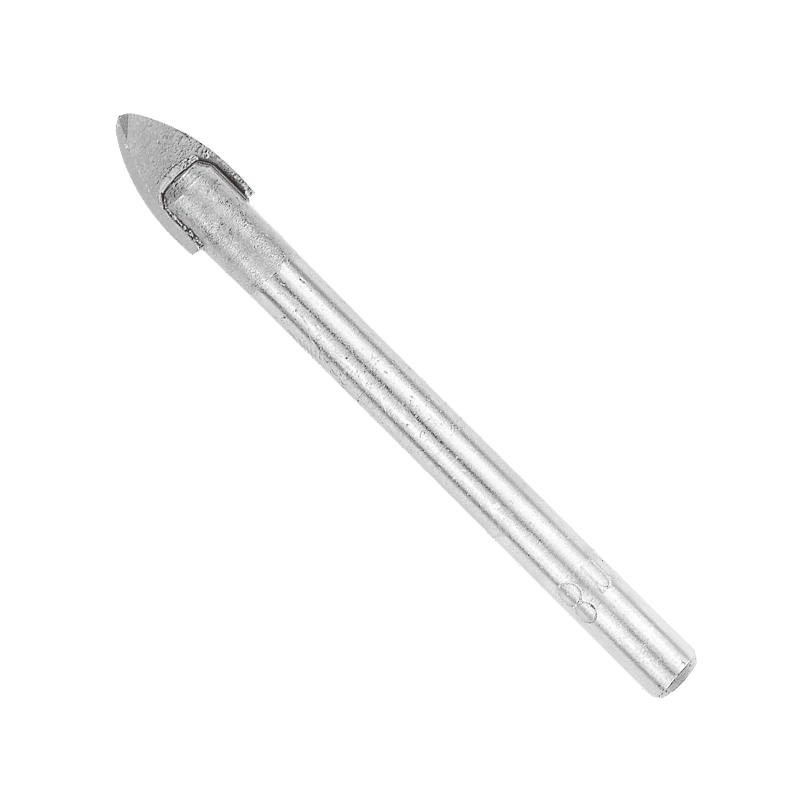2025-09-19
Introduction to Overheating Challenges in Glass Drilling
Drilling glass requires careful attention to temperature control, as excessive heat can cause cracking, chipping, or complete breakage. A Glass Drill Bit must be able to cut efficiently while reducing thermal stress on the material. Overheating occurs when friction between the bit and the glass generates more heat than can be dissipated, which is especially problematic for thick or tempered glass. Understanding the factors that contribute to heat buildup and employing effective mitigation techniques is critical for achieving clean, precise holes while preserving the integrity of the glass.

How Overheating Occurs During Drilling
During drilling, friction is the primary source of heat. When a drill bit spins at high speed without adequate cooling or lubrication, the temperature at the contact point can rise rapidly. Hard materials such as glass are poor conductors of heat, so localized temperature spikes can cause expansion and internal stress. If the heat is excessive, micro-cracks can form, causing chips or even complete fractures. Overheating is more pronounced when drilling thicker glass or using blunt or worn bits that require additional pressure to penetrate the surface.
Cooling Techniques to Prevent Glass Damage
One of the effective ways to prevent overheating is through proper cooling. Water is commonly applied directly to the drilling site to dissipate heat and maintain a stable temperature. Lubricants designed for glass drilling can also reduce friction, allowing the bit to cut more smoothly. Continuous water flow or periodic pauses to cool the bit are practical strategies, especially for extended drilling sessions or when creating large-diameter holes. By managing heat effectively, the risk of cracks and surface imperfections is significantly reduced.
Drilling Speed and Pressure Management
In addition to cooling, the operator’s technique is crucial for controlling heat generation. Maintaining a moderate drilling speed helps prevent rapid friction-induced temperature increases, while steady, gentle pressure ensures that the bit penetrates the glass without excessive force. Applying too much pressure can cause sudden stress and micro-fractures, while too little pressure may result in increased friction time, generating more heat. A balanced approach that combines controlled speed and consistent pressure is key to safe, effective drilling.
Impact of Drill Bit Material and Design
The composition and design of a Glass Drill Bit also influence overheating. Bits made from tungsten carbide or coated with diamond provide both hardness and heat resistance. Sharp, well-engineered cutting edges reduce the effort required to penetrate glass, reducing friction and heat buildup. Bits with pointed tips or specialized flutes can channel debris away from the contact point, further reducing thermal stress and ensuring smoother operation. Choosing a high-quality bit is therefore essential to maintaining consistent temperature control during drilling.
Practical Implications for Different Glass Types
Different types of glass respond differently to heat. Standard glass may tolerate brief temperature increases, while tempered or laminated glass is highly sensitive to uneven heating, which can trigger sudden shattering. Controlling overheating becomes particularly critical in these cases, as even minor temperature spikes can compromise structural integrity. Proper cooling, bit selection, and drilling technique are indispensable for avoiding costly material loss and ensuring safety in these applications.
Combining Technique and Tool Quality to Avoid Cracks
Preventing overheating is essential for successful glass drilling. By combining a high-quality Glass Drill Bit with proper cooling methods, controlled drilling speed, and careful pressure management, users can reduce thermal stress and avoid cracks or breakage. Understanding the factors that contribute to overheating and taking proactive measures ensures both precision and safety, enabling clean, reliable results across various glass types and thicknesses. Effective heat management is, therefore, a critical component of any glass drilling operation.